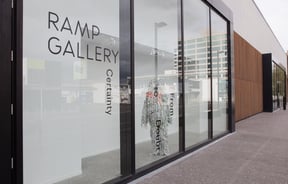Cultivating Beauty: The Legacy of Hamilton Gardens

A mere few minutes from central Hamilton are the Hamilton Gardens, one of New Zealand’s largest city parks. Receiving upwards of 500,000 visitors to the Enclosed Gardens, and over a million visits to the open park spaces every year, it’s no wonder TripAdvisor considers them in the top one percent of travel experiences worldwide.
Beyond the blooms and greenery at Hamilton Gardens, the gardens offer a unique journey through time, spanning the course of around 5000 years. Globally unique in its concept, the Hamilton Gardens showcase the evolution of garden design around the world. All the major civilisations have their own themed garden, offering a glimpse into a different culture at a point in time and its unique perspective on nature over time.
Words by: Nicole Mudgway
Photos by: Anna Briggs
Each of the 18 themed gardens (known as the ‘Enclosed Gardens’) whispers a different story. For example, the memorable Ancient Egyptian Garden represents ancient beliefs in the afterlife, the tranquil Japanese Garden represents the spread of Buddhism and the upcoming Medieval Garden represents a major change, the spread of Christianity, and the idea of Christian charity and helping strangers. Each garden is distinct and is very different to the last.

In addition to the Enclosed Gardens, the Hamilton Gardens also feature an expansive park and lawn space, an onsite cafe, a playground and of course, it’s all built around Hamilton’s greatest natural asset, the mighty Waikato River. The 43-hectare space offers a plethora of greenery, flowers and stories, and with the ever-changing seasons and ongoing upgrades, no two visits will ever be the same.
Back in the day, the land was once home to the Ngaati Wairere people. The Waikato River was primarily used for communication and transport, and the fertile soil of the riverbanks was popular for crop growing, namely kumara. Following European settlement, the use of the land went through a series of changes, the last of which was (somewhat surprisingly) a rubbish dump.
It’s difficult to imagine the work required to convert a rubbish dump to a public garden, but that’s exactly what happened as volunteers and community groups removed forests of weeds and blackberry bushes and shooed away scavenging gulls while coaxing the barren site back to life. In the 1970s, the Rose Gardens opened officially, with the first of the Enclosed Gardens following a decade later.
The gardens have always been the beneficiaries of enormous support from volunteers, local ratepayers and more officially the ‘Friends of the Gardens’. Without these generous contributions of time and resources, the gardens wouldn’t be what they are. Another huge driving force of the Hamilton Gardens was Dr Peter Sergel. Much of the gardens’ evolution, growth and vision can be attributed to his expertise and passion, aided by a background in landscape architecture and attention to detail and accuracy. He was involved from 1979 right through to his retirement in 2020.
Dr Sergel’s vision for the gardens was a living gallery of gardens from around the world, all connected but still separate from one another. They were to be shaped within three categories: the Paradise Gardens, which often evoked a sense of tranquillity or order and structure; the Fantasy Gardens, which illustrate how imagination has been used in garden design; and the Productive Gardens, to educate visitors on how plants have been grown for food and medicine.
Each categorised garden allows visitors to explore the past, the present and the peculiar. Over time these categories have also extended to include the Cultivar Gardens, which showcase traditional gardens from around the world, and also the Landscape Gardens, which demonstrate the relationship between nature and nurture. Three new gardens are currently in the works: the Medieval Garden, the Baroque Garden, and the Pasifika Garden. From design through to implementation, each new garden takes a couple of years to create - so watch this space!
Enriching the visitor experience is always front of mind, and other recent changes include the opening of a beautiful new entrance precinct in 2024, along with the introduction of paid entry. Until late 2024, the Hamilton Gardens were free to visitors. However, consultation with the ratepayers of Hamilton (and key funders of the gardens) concluded that an entry fee for out-of-towners would help remove the financial pressure for the local population, as well as creating a more self-sustainable visitor destination. There’s already so much to see and do at the Hamilton Gardens, the entrance fee will no doubt see them further flourish.
Getting the most out of your visit can be made easier with a guided tour. Across 75 minutes, charismatic and informative guides lead the way, uncovering lesser known stories and interesting insights as they offer up their wealth of knowledge and bring the gardens to life. Alternatively, audio guides enable a more leisurely option, where you can listen to a narrated journey through the ages and cross the continents at your own pace. There are often multiple points of interest within each garden, allowing visitors to spend as long or as little somewhere they enjoy.
Every visit brings with it something new to discover. Whether it’s the changing of the seasons, new features or simply the noticing of something that wasn’t seen last time, it can be said with almost certainty that no two trips are alike. The gardens are more than just a local treasure, they’re a source of pride for the city, the region and even New Zealand. There truly isn’t another public garden like the Hamilton Gardens, anywhere on Earth.
Neat Hamilton Places
Hayes Common

This restaurant has large tables to fit the whole family as well as cosy nooks to curl up in with a cup of coffee and a good read.
O-Studio Hamilton

Hamilton’s O-Studio offers visitors a complete reset for both body and mind.








